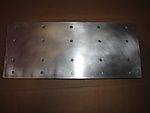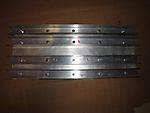S
sm0k4
So it would be nice if you could rope your cloning LEDs into the vegging LED string and enjoy the 90% efficiency, but the downside is that many growers veg for 20/4 and clone 24/0. A commercial greenhouse grower with 45 years growing experience (non cannabis) I spoke with swears by 24 hour light for cloning but advises against it for basic vegging.
One thing that comes to mind is cloning only takes a couple weeks. The little waste is probably not a huge issue. It comes to however you can make things work sometimes. It would be real hard to find a 5-6V 90% efficient supply at a decent cost. Plus with the energy savings by only running a few watts, you are already way ahead of any floro or HID for the same task.
Tit for tat in this case, IMHO.
So there are some losses through the AC/DC rectifying (less losses with a switching supply), but I can live with that for now until I get set up and have more time to do another driver design from a mains supply. It is still using less energy than a similar HPS. Its hard to design a rock solid and totally efficient product that is also modular and easily customizable to a space the first time out of the gate, but eventually we will get there.












